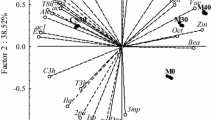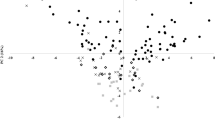Abstract
The aim of this work was to study oenological techniques to obtain adequate base wine for red sparkling wine elaboration. Four winemaking techniques were carried out: pre-fermentative cold maceration with dry ice and delestage with premature grapes; and sugar reduction in must and partial dealcoholisation of wine with mature grapes. Their effect on oenological parameters, volatile composition, foam and sensory characteristics was valuated. Reduction of sugar content and partial dealcoholisation allow obtaining base wines with more adequate alcohol content. No differences were found between the oenological parameters during the ageing time. Pre-fermentative cold maceration and partial dealcoholisation had a greater influence on the volatile composition of the base and red sparkling wines. Oenological technique did not affect the foam instrumental parameters. Red sparkling wines from premature grapes showed higher vegetal aromas, and pre-fermentative cold maceration the best foam sensory descriptors.


Similar content being viewed by others
References
OIV (2014) In: El mercado de los vinos espumosos. International Organization of Vine and Wine. http://www.oiv.int/public/medias/95/les-vins-effervescents-es-complet.pdf. Accessed 5 Dec 2018
OIV (2017) In: Statistical Report on World Vitiviniculture 2017. International Organization of Vine and Wine. http://www.oiv.int/public/medias/5479/oiv-en-bilan-2017.pdf. Accessed 5 Dec 2018
Pérez-Magariño S, Ortega-Heras M, Martínez-Lapuente L, Guadalupe Z, Ayestarán B (2013) Multivariate analysis for the differentiation of sparkling wines elaborated from autochthonous Spanish grape varieties: volatile compounds, amino acids and biogenic amines. Eur Food Res Technol 236:827–841
Caliari V, Burin VM, Rosier JP, BordignonLuiz MT (2014) Aromatic profile of Brazilian sparkling wines produced with classical and innovative grape varieties. Food Res Int 62:965–973
Olarte C, Pelegrín J, Reinares E (2017) Model of acceptance of a new type of beverage: application to natural sparkling red wine. Span J Agric Res 15:e0102. https://doi.org/10.5424/sjar/2017151-10064
Gil-Muñoz R, Moreno-Pérez A, Vila-López R, Fernández-Fernández JI, Martínez-Cutillas A, Gómez-Plaza E (2009) Influence of low temperature prefermentative techniques on chromatic and phenolic characteristics of Syrah and Cabernet Sauvignon wines. Eur Food Res Technol 228:777–788
Ortega-Heras M, Pérez-Magariño S, González-Sanjosé ML (2012) Comparative study of the use of maceration enzymes and cold pre-fermentative maceration on phenolic and anthocyanic composition and colour of a Mencía red wine. LWT - Food Sci Technol 48:1–8
Cai J, Zhu BQ, Wang YH, Lu L, Lan YB, Reeves MJ, Duan CQ (2014) Influence of pre-fermentation cold maceration treatment on aroma compounds of Cabernet Sauvignon wines fermented in different industrial scale fermenters. Food Chem 154:217–229
Aleixandre-Tudó JL, Álvarez I, Lizama V, Nieuwoudt H, García MJ, Aleixandre JL, du Toit WJ (2016) Modelling phenolic and volatile composition to characterize the effects of pre-fermentative cold soaking in Tempranillo wines. LWT Food Sci Technol 66:193–200
Álvarez I, Aleixandre JL, García J, Lizama V (2006) Impact of prefermentative maceration on the phenolic and volatile compounds in Monastrell red wines. Anal Chim Acta 563:109–115
Puertas B, Guerrero RF, Jurado MS, Jiménez MJ, Cantos-Villar E (2008) Evaluation of alternative winemaking processes for red wine color enhancement. Food Sci Technol Int 15:21–27
Leahy R (2000) Délestage fermentation: from bitter to better reds. Vineyard Winery Manag 26(5):101–104
Zamora F (2003) Elaboración y crianza del vino tinto: aspectos científicos y prácticos. AMV Editions, Madrid
Zoecklein BW, Pélanne LM, Birkenmaier SS, Reed K (2009) Impact of délestage with partial seed removal. Practical Winery & Vineyard Journal, San Rafael, pp 34–52
García-Martín N, Pérez-Magariño S, Ortega-Heras M, González-Huerta C, Mihnea M, González-Sanjosé ML, Palacio L, Prádanos P, Hernández A (2011) Sugar reduction in white and red musts with nanofiltration membranes. Desalin Water Treat 27:167–174
Motta S, Guaita M, Petrozziello M, Ciambotti A, Panero L, Solomita M, Bosso A (2017) Comparison of the physicochemical and volatile composition of wine fractions obtained by two different dealcoholization techniques. Food Chem 221:1–10
Belisario-Sánchez YY, Taboada-Rodriguez A, Martín-Iniesta F, López-Gómez A (2009) Dealcoholized wines by spinning cone column distillation: phenolic compounds and antioxidant activity measured by the 1,1-diphenyl-2-picrylhydrazyl method. J Agric Food Chem 57:6770–6778
Varavuth S, Jiraratananon R, Atchariyawut S (2009) Experimental study on dealcoholization of wine by osmotic distillation process. Sep Purif Technol 66:313–321
Bogianchini M, Cerezo AB, Gomis A, López F, García-Parrilla MC (2011) Stability, antioxidant activity and phenolic composition of commercial and reverse osmosis obtained dealcoholised wines. LWT Food Sci Technol 44:1369–1375
García-Martín N, Pérez-Magariño S, Ortega-Heras M, González-Huerta C, Mihnea M, González-Sanjosé ML, Palacio L, Prádanos P, Hernández A (2010) Sugar reduction in musts with nanofiltration membranes to obtain low alcohol-content wines. Sep Purif Technol 76:158–170
Salgado C, Palacio L, Prádanos P, Hernández A, González-Huerta C, Pérez-Magariño S (2015) Comparative study of red grape must nanofiltration: laboratory and pilot plant scales. Food Bioprod Process 94:610–620
OIV (1990) Compendium of international methods of analysis of wine and musts. Organization Internationale de la Vigne et du Vin, Paris
Glories Y (1984) La couleur des vins rouges. 2_eme partie: mesure, origine et interpretation. Connais Vigne Vin 18:253–271
Paronetto L (1977) Polifenoli e tecnica enologica. Selepress, Milan
Rodríguez-Bencomo JJ, Ortega-Heras M, Pérez-Magariño S (2010) Effect of alternative techniques to ageing on lees and use of non-toasted oak chips in alcoholic fermentation on the aromatic composition of a red wine. Eur Food Res Technol 230:485–496
Maujean A, Poinsaut P, Dantan H, Brissonnet F. Cossiez E (1990) Etude de la tenue et de la qualité de mousse des vins effervescents. II. Mise au point d’une technique de mesure de la moussabilitéde la tenue et de la stabilitéde la mousse des vins effervescents. Bull l’OIV 63:405–427
Pérez-Magariño S, Martínez-Lapuente L, Bueno-Herrera M, Ortega-Heras M, Guadalupe Z, Ayestarán B (2015) Use of commercial dry yeast products rich in mannoproteins for white and rosé sparkling wine elaboration. J Agric Food Chem 63:5670–5681
González-Sanjosé ML, Ortega-Heras M, Pérez-Magariño S (2008) Micro-oxygenation treatment and sensory properties of young red wines. Food Sci Technol Int 14:123–130
Gallart M, Tomás X, Suberbiola G, López-Tamames E, Buxaderas S (2004) Relationship between foam parameters obtained by sparging method and sensory evaluation of sparkling wines. J Sci Food Agric 84:127–133
Clarke RJ, Bakker J (2004) Grape varieties and growing regions. In: Clarke RJ, Bakker J (eds) Wine flavour chemistry. Blackwell Publishing Ltd, Oxford
Mihnea M, González-Sanjosé ML, Ortega-Heras M, Pérez-Magariño S, García-Martín N, Palacio L, Prádanos P, Hernández A (2012) Impact of must sugar reduction by membrane applications on volatile composition of Verdejo wines. J Agric Food Chem 60:7050–7063
Francis IL, Newton JL (2005) Determining wine aroma from compositional data. Austr J Grape Wine Res 11:114–126
Escudero A, Campo E, Fariña L, Cacho J, Ferreira V (2017) Analytical characterization of the aroma of five premium red wines. Insights into the role of odor families and the concept of fruitiness of wines. J Agric Food Chem 55:4501–4510
Sánchez-Palomo E, Gómez García-Carpintero E, Gómez-Gallego MA, González-Viñas MA (2012) The aroma of rojal red wines from La Mancha region—Determinations of key odorants. In: Salih B (ed) Gas chromatography in plant science, wine technology, toxicology and some specific applications. Intech, Croatia, pp 147–170
Antalick G, Suklje K, Blackman JW, Meeks C, Deloire A, Schmidtke LM (2015) Influence of grape composition on red wine ester profile: comparison between Cabernet Sauvignon and Shiraz cultivars from Australian warm climate. J Agric Food Chem 63:4664–4672
Bayonove C, Baumes R, Crouzet J, Günata Z (2003) Aromas. In: Enología: fundamentos científicos y tecnológicos. Mundi prensa-AMV Editions, Madrid
Loscos N, Hernández-Orte P, Cacho JF, Ferreira V (2007) Release and formation of varietal aroma compounds during alcoholic fermentation from nonfloral grape odorless flavor precursors fractions. J Agric Food Chem 55:6674–6684
Ugliano M, Henschke PA (2009) In: Moreno-Arribas MV, Polo MC (eds) Wine chemistry and biochemistry. Springer, New York, USA
Longo R, Blackman JW, Torley PJ, Rogiers SY, Schmidtke LM (2017) Changes in volatile composition and sensory attributes of wines during alcohol content reduction. J Sci Food Agric 97:8–16
Pérez-Magariño S, Ortega-Heras M, Rodríguez-Bencomo JJ, Cano-Mozo E, González-Huerta C, Herrera P (2008) Estudio de desalcoholización parcial en vinos blancos y tintos. Bull l’OIV 81(nº 932–934):541–549
Bindon K, Varela C, Kennedy J, Holt H, Herderich M (2013) Relationships between harvest time and wine composition in Vitis vinifera L. cv. Cabernet Sauvignon. 1. Grape and wine chemistry. Food Chem 138:1696–1705
Riu-Aumatell M, Bosch-Fusté J, López-Tamames E, Buxaderas S (2006) Development of volatile compounds of cava (Spanish sparkling wine) during long ageing time in contact with lees. Food Chem 95:237–242
Torrens J, Riu-Aumatell M, Vichi S, López-Tamames E, Buxaderas S (2010) Assessment of volatile and sensory profiles between base and sparkling wines. J Agric Food Chem 58:2455–2461
Pérez-Magariño S, Ortega-Heras M, Bueno-Herrera M, Martínez-Lapuente L, Guadalupe Z, Ayestarán B (2015) Grape variety, aging on lees and aging in bottle after disgorging influence on volatile composition and foamability of sparkling wines. LWT Food Sci Technol 61:47–55
Esteruelas M, González-Royo E, Kontoudakis N, Orte A, Cantos A, Canals JM, Zamora F (2015) Influence of grape maturity on the foaming properties of base wines and sparkling wines (Cava). J Sci Food Agric 95:2071–2080
Girbau-Solà T, López-Barajas M, López-Tamames E, Buxaderas S (2002) Foam aptitude of Trepat and Monastrell red varieties in Cava elaboration. 2. Second fermentation and aging. J Agric Food Chem 50:5600–5604
Vanrell G, Canals R, Esteruelas M, Fort F, Canals JM, Zamora F (2007) Influence of the use of bentonite as a riddling agent on foam quality and protein fraction of sparkling wines (Cava). Food Chem 104:148–155
Acknowledgements
The authors would like to thank the ‘Instituto Nacional de Investigación y Tecnología Agraria y Alimentaria’ (INIA) for the funding provided for this study through the project RTA2012-092-C02-01 (with FEDER funds). M. G-L. thanks the Comunidad Autónoma de La Rioja and Universidad de La Rioja for her FPI-UR-CAR grant.
Author information
Authors and Affiliations
Corresponding author
Ethics declarations
Conflict of interest
The authors declare that there is no conflict of interests regarding the publication of this article.
Compliance with ethics requirement
This article does not contain any studies with human or animals and complies with ethical requirements.
Rights and permissions
About this article
Cite this article
Pérez-Magariño, S., Bueno-Herrera, M., López de la Cuesta, P. et al. Volatile composition, foam characteristics and sensory properties of Tempranillo red sparkling wines elaborated using different techniques to obtain the base wines. Eur Food Res Technol 245, 1047–1059 (2019). https://doi.org/10.1007/s00217-018-3209-y
Received:
Revised:
Accepted:
Published:
Issue Date:
DOI: https://doi.org/10.1007/s00217-018-3209-y




